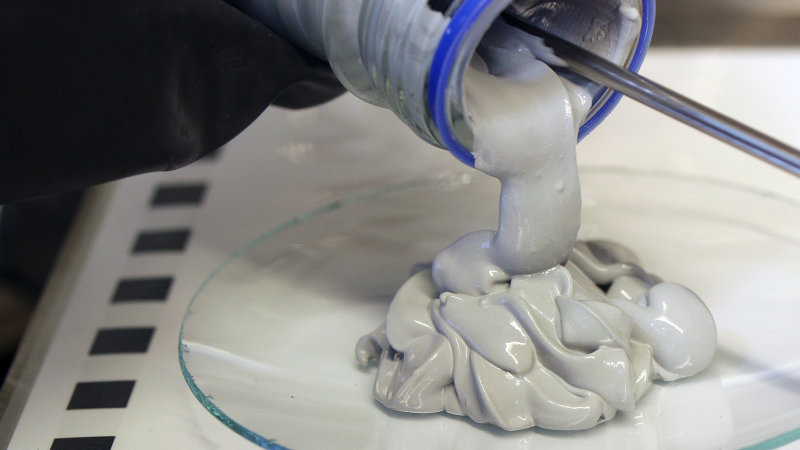Hydrogen has enormous potential as a clean energy source, but there are still significant hurdles to overcome before it becomes a legitimate option for cars and trucks. Two of those problems are fuel storage and transportation, especially when large high-pressure tanks are not an option. A new creation called Powerpaste, developed by a research team at the Fraunhofer Institute for Manufacturing Technology and Advanced Materials in Dresden, Germany, could potentially answer those questions.
According to the Institute, Powerpaste consists of magnesium hydride (made when magnesium powder is combined with hydrogen), an ester and a metal salt. A plunger pushes the paste out of the container, water is added and hydrogen is released. Half of the hydrogen is released from the magnesium hydride and the other half comes from the water. The resulting hydrogen can then be used to generate electricity with a fuel cell.
Because both parts of the mixture give off hydrogen, the Powerpaste and water combination is said to be able to store more hydrogen than standard high-pressure tanks and is 10 times denser than current batteries. And since both the paste and the required water can be easily transported in cartridges or jerry cans and pose no dangerous threat at high temperatures, no significant infrastructure is needed to make the fuel source available to potential customers.
The Fraunhofer Institute suggests that electric scooters and motorcycles are an ideal first test for its Powerpaste, and it plans to launch a production plant this year to produce up to four tons of the fuel per year. If that works and everything works as well as they hope, the researchers hint that Powerpaste could be useful for other industries, probably including cars.
Of course, hydrogen has other hurdles to overcome, the most important of which is primarily about how to properly capture hydrogen, but we’re sure researchers are working to address those questions as well.
Related video:
